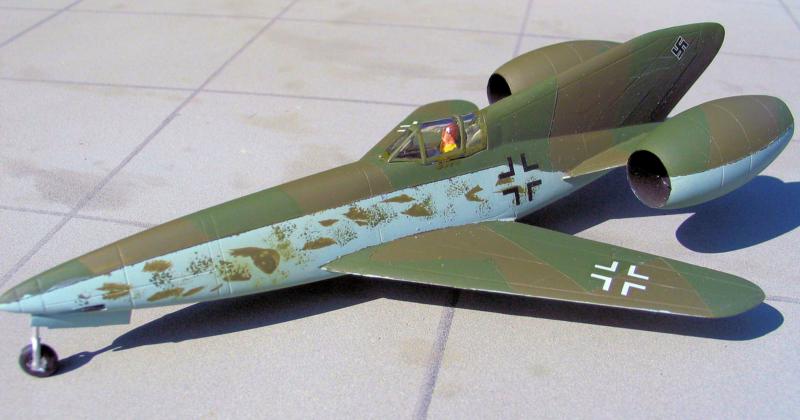
Despite this reputation for producing very sophisticated weapons and equipment, the reality was that most Nazi super-weapons were incredibly expensive and in the vast majority of cases totally impractical. Moreover, many of them were also less refined and efficient (‘advanced’) than the experimental devices being tested in the outside world. For example, jetpack technology itself wasn’t rendered workable until 1958 and without an alternative fuel source, still remains impractical today.
10. Jet Interceptors That Could Have Blown The Allies Out Of The Sky
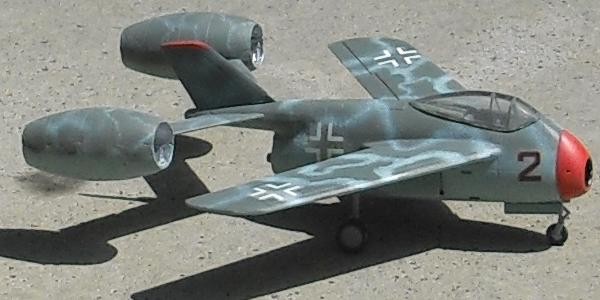
In early 1945, scared by the thought of facing the advanced Allied fighter plane, the Gloster Meteor, over Europe, the Nazis began quickly developing more advanced jet interceptors to replace their existing jet fighters. This new generation of Luftwaffe jet planes would, it was hoped, guarantee their dominance in the air.
Two very advanced interceptors were planned at the German’s Focke-Wulf factory. The first was the Super Lorin (a model of this plane is pictured above) and the second was the Ta 283. Fortunately, German engineers had yet to build the prototypes of these jet interceptors when British troops captured the Focke-Wulf factory in 1945.
Had these faster and more agile jet planes made it into the skies over Europe in large numbers, RAF and USAF planes might not have stood much chance. It’s not hard to imagine that the impetus of the Allied advance could have faltered, buying Hitler time to bring yet more powerful weapons into play.
9. Superguns That Were Going To Flatten London
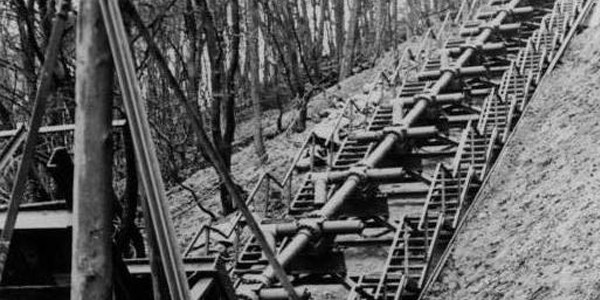
The Nazis already had a couple of massive train-mounted super cannons positioned on the French coast of the Channel, which they used to attack targets up to 29 miles away. These weapons were bad enough, but they were only part of the story.
The German plan was to use 50 Vergeltungswaffe 3 superguns (called the V-3s) to bombard London from two huge underground bunkers near Mimoyecques in northern France, with the first base’s full arsenal of 25 gun tubes commencing firing in October 1944. Fortunately, Allied bombing raids in July 1944 ended the construction of these superguns using deep-penetration bombs, saving London from even more pounding.
But two similar guns with shorter barrels were finished and they were used to bombard Luxembourg from December 1944 to February 1945. The attacks were not particularly overwhelming: only 10 people were killed and 35 wounded. Due to the collapsing rail network, the Nazis found it hard to get ammunition to the guns and even the size of the projectiles had to be scaled back.
Had the Mimoyecques guns gone into action in 1944, the Nazis would have been in a position to get more and larger ammunition to the guns. And that’s a truly terrible thought to contemplate.
8. VTOL Planes That Could Have Attacked From Anywhere
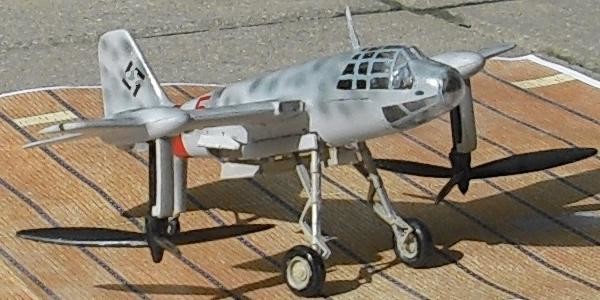
The Nazis were also developing vertical take-off/landing (VTOL) aircraft decades before the British came up with the Harrier Jump Jet. With these planes, the speed and cheapness of a fixed-wing aircraft would have been combined with the obvious advantages of a helicopter. That main advantage being the aircraft can take off and land without runways.
This VTOL plane, called the Focke-Achgelis Fa 269, was a one-person fighter designed by Heinrich Focke in 1941. The plane had tilting rotors that pointed down for take-off and pivoted to the rear for flight, pushing the craft forward.
Focke-Achgelis got as far as building a full-size model of the craft and demonstrating the VTOL concept. Again, the Allies bombed the project, setting the work back years. The project was postponed indefinitely in 1944 when the manufacturer said a prototype couldn’t be completed before 1947.
Had the factory escaped Allied bombing, VTOL aircraft could possibly have been deployed before the end of the war. Using the ability to land in any medium-sized clear area rather than returning to an airfield, the craft could have been more rapidly refuelled and rearmed, providing the Nazis with a vital tool for quickly attacking advancing Allied troops.
With the constant threat of attack from above by a Luftwaffe craft that could hover and pick its targets, the Allied ground offensive could have been severely slowed down. Assuming Hitler could have found enough fuel for their petrol-guzzling sorties.
7. Jet-Powered Bombers That Were Impossible To Intercept
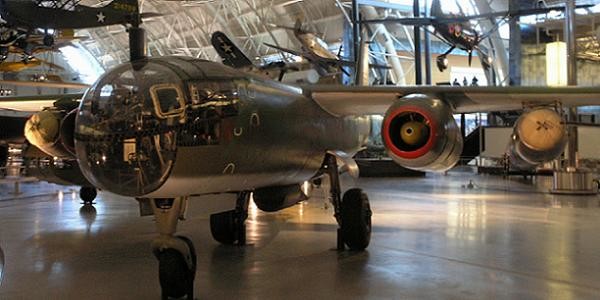
Superguns weren’t the only highly advanced weapons developed to destroy targets in the British Isles. The Luftwaffe actually starting sending jet-powered bombers on raids over England in the closing days of the war in the European theatre. And the RAF couldn’t scramble fast enough to engage with them.
The plane that caused the RAF so much trouble was the Arado Ar 234, the world’s first fully operational jet bomber. This fearsome aircraft was produced by Germany’s Arado company in 1944 and, thankfully, was only built in very small numbers.
The Luftwaffe used the plane for reconnaissance to begin with, only utilising the aircraft for bombing raids a few times towards the end of hostilities. However, the Arado Ar 234 was virtually impossible to intercept whilst over England, showing just how potentially lethal it could be as a delivery system.
In fact, the Ar 234 was the last Luftwaffe aircraft to fly over English soil, in April 1945.
Be grateful the Nazis didn’t have time or resources to build more of these beasts, because there wasn’t much that could stop them.
6. Sub-Orbital Bombers That Were Going To Attack The USA
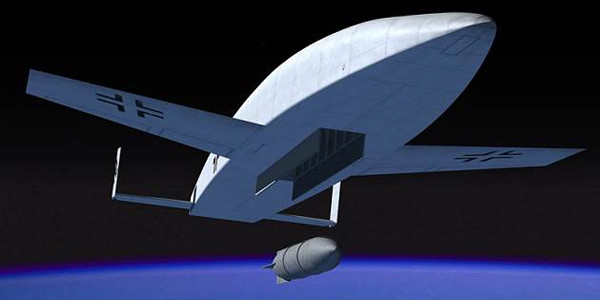
The horrific prospect of Nazi bombing raids that couldn’t be intercepted didn’t end with the very real Arado Ar 234, though. The Silbervogel (literally “Silver Bird” in German) was a design proposed by Eugen Sänger and Irene Bredt in the late 1930s for a rocket-powered sub-orbital bomber. This design came under consideration in 1942 for the Amerika Bomber mission, the endeavour to attack the American mainland
Other candidates for the mission were trans-Atlantic range strategic bombers with piston engines, like the Messerschmitt Me 264 and the Junkers Ju 390. Out of these entries, only the Silbervogel was a true glimpse of what future technology would bring: an honest-to-goodness space plane that used the lifting body principle.
An example of a real space plane that used the same ideas was the Space Shuttle, so the Silbervogel was considerably ahead of its time, to say the least. In the end, the space plane was considered too complicated and costly to build, and the plane’s development never got beyond the testing of a model.
The Silbervogel would have been able to cross the Atlantic, deliver a 4,000 kg bomb to the continental USA, and then finish its marathon flight on a Japanese landing strip somewhere in the Pacific. Or, assuming the Nazi project listed in first place on this list had seen fruition, it could have delivered something far worse than a conventional explosive.
5. U-Boats That Could Have Launched V-2 Rockets At New York
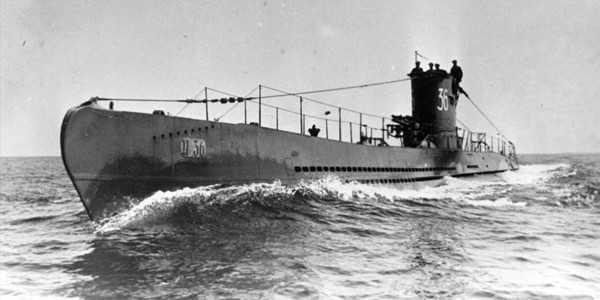
The Nazis also had more practical plans for attacking the continental USA. Rather than building one or two space planes, the German Navy devised a more practical and far cheaper means of hitting American cities: they intended to build the first ballistic missile submarine.
Several experiments with firing relatively small rockets from U-Boats had already been conducted with mixed success, but when the V-2 rocket was developed, it occurred to the Nazis that their submarines could be adapted to launch these rockets from positions close to the US coast – placing American cities such as New York well within their range.
After the U-Boat’s crew prepared the rocket for launch, the V-2 could be fired remotely from the safety of the U-Boat. Then the submarine could return to port to pick up another rocket.
Despite construction of three of the towed submersibles being ordered towards the end of 1944, the deteriorating situation for the Nazis meant only one was built and the German Navy never had the opportunity to conduct trials. Still, with one prototype actually constructed, this technology got worrying close to being used in combat.
4. The World’s First Stealth Bomber
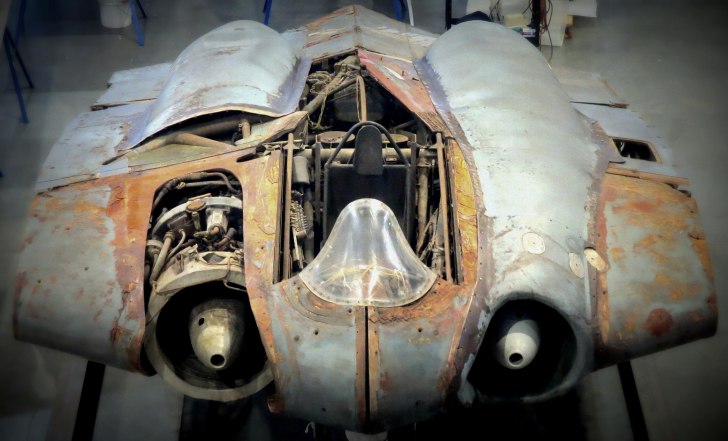
Whilst launching a few V-2s from submersibles would have achieved very little in the end (the rockets couldn’t be aimed very well), the Nazis did have a plan to drop a much greater tonnage of explosives on American targets with much more precision – a stealth bomber.
Using this highly advanced technology, the attacks would have been more than merely psychological warfare. And a stealth bomber entering US airspace could have proven a lot harder to detect and stop than U-Boats sailing into US waters. The plane that could have posed severe difficulties for Allied aerial defences was Reimar Horten’s Ho 229.
This futuristic aircraft was the first flying wing to use jet engines and the only plane to come close to meeting Luftwaffen Reichsmarschall Hermann Göring’s “3 x 1000″ performance requirements. The extraordinary specifications demanded by Göring were for a plane that could carry 1,000 kg of bombs a distance of 1,000 km with a speed of 1,000 km per hour.
The Ho 229 wasn’t only fast, able to carry a big payload, and capable of covering long distances, it featured an amazing stealth feature designed to befuddle Britain’s Chain Home radar early warning system. Horten mixed charcoal dust into the plane’s wood glue to absorb the radar system’s electromagnetic waves!
Not only that, because the plane was a flying wing, it had less surface area to be picked up by the radar. Even if the radar system had detected the plane’s approach, the unusual signature may not have been correctly identified. And that edge would have given the plane the chance to bomb the radar installations into oblivion, leaving Britain open to attack.
When a replica of the Ho 229 was tested for its stealth capabilities in a 2008 documentary produced by the National Geographic Channel, the results showed that the plane was indeed less visible on the British-style of radar used at the time. About 20% less visible, to be exact. The British would have had about two and a half minutes to respond to the plane’s high-speed attack – and that just wouldn’t have been long enough.
Thank God the Ho 229 wasn’t ready soon enough to be thrown at the British. On a cheerier note, the stealthy bomber would have done less well against American-style radar, which worked differently.
3. Rockets That Could Have Struck The USA And Put Weapons Into Orbit
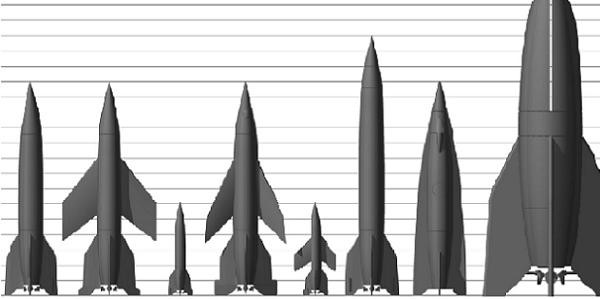
Hitler didn’t only consider means of bombing North America that used vehicles to deliver the rockets (such as sub-orbital bombers and stealth bombers), he also wanted to build intercontinental ballistic missiles that could hit the USA all by themselves.
These missiles were part of the Aggregat series: rockets designed between 1933 and 1945 by the German army. The most famous rocket in this series was the V-2 (officially called the A4), but there were bigger rockets on the drawing board – monsters that could have allowed Hitler to bomb his enemies with enormous warheads.
The German word “Aggregat” was used to indicate that the rockets used different stages working together to deliver a payload. For example, the A10 featured an A9 rocket mounted atop an A10 booster stage. The A10 would have been large enough to strike at the US mainland from launch sites in Europe – less complicated than a space plane, perhaps, but still an expensive weapon.However, the A12 was intended to be a true orbital rocket. This gargantuan rocket was a four-stage vehicle, able to lift as much as 10 tonnes of payload into a low Earth orbit.
But why were the Nazis interested in intercontinental missiles? Surely conventional warheads could only have delivered psychological damage to the Americans; especially as there could never have been more than a few launches. Even more puzzling, what exactly was Hitler hoping to put into orbit? Read on for the terrifying answers to these question.
2. The Sun Gun That Could Have Burnt Entire Cities To Ash

One weapon Hitler could have been considering launching into orbit was the sun gun, also known as the heliobeam. This theoretical weapon was like something out of a supervillain’s notebook. The space-based weapon was dreamt up by German physicist Hermann Oberth in 1929, half a century before the Star Wars initiative became reality. He planned a space station on which a 100 metre-wide concave mirror could be fitted. This mirror would concentrate sunlight onto a point on the surface of the Earth, burning a swathe of destruction much like the Icarus satellite did in the James Bond film, Die Another Day.
Oberth’s calculations were off, though, and his version couldn’t have worked. However, during World War II, scientists at the German research base in Hillersleben began to rework his idea into something with better maths. They calculated that a huge reflector made out of metallic sodium, with a surface area of 9 square km, could generate enough focused heat to boil an ocean boil or fry a city. During questioning by the Allies, these scientists insisted the sun gun could be completed within only 10 years.
At the time, there would have been almost no way of knocking out the Nazi space station, had it been built, since the Germans were far ahead in rocketry.
1. The Atomic Bomb

Perhaps Hitler was hoping to fit an Atomic bomb to the top of one of his planned intercontinental A12 rockets. If so, his intention was nothing more than a pipe dream.
The Nazis were engaged in a secret nuclear energy project during World War II, trying to make a bomb as well as a nuclear reactor, but this effort was never going to produce results in the same way the Manhattan Project did. Hitler simply didn’t put enough resources into it.
On top of that, scientists who could have helped with the research were conscripted into the army, Luftwaffe, or navy, and their talents were wasted along with their blood. And, of course, the antisemitic political beliefs of the Nazis caused other talented people to flee Germany, not only draining the Third Reich of the brains needed to complete the project but also aiding the Americans who were sometimes the beneficiaries of these defections. All things considered, the one wonder weapon that could have persuaded the Allies to call a halt to their offensives was the very weapon that Hitler never put sufficient effort into.
First published on whatculture.com

Δεν υπάρχουν σχόλια:
Δημοσίευση σχολίου